Some people talked about it without shame, although some attempts were made to embarrass them. Others felt Jews and Poles alike. There were also those who preferred not to mention it all their lives. Today we have all of them for flesh and blood Poles. Can you guess who we put on this list?
1. Jan Kiepura. The Jewish tenor who scolded Göring
Miriam Neuman came to Sosnowiec as a teenager (with her parents from a village near Radomsko). She quickly met the baker Franciszek Kiepura and, wanting to marry him, decided to be baptized.
She played the violin and it is possible that her son Jan inherited the musical talent from her (although the biographer also writes about the influence of a very musical grandmother from the Kiepura side). At school, his clear and loud singing was heard everywhere - one of his high school classmates recalled the aria "La donna è mobile", sung in the toilet, where one would drink a cigarette.
Such were the beginnings of the world-famous artist. But before Jan Kiepura was on the boards of the Viennese Staatsoper, Milan's La Scala and the Metropolitan Opera in New York, he had to leave Sosnowiec for Warsaw. It is said that this happened under the influence of a good violinist, an Israelite Lejbowicz , about which Kiepura told the monthly "Muzyka" in 1936, when he was at the peak of his career.
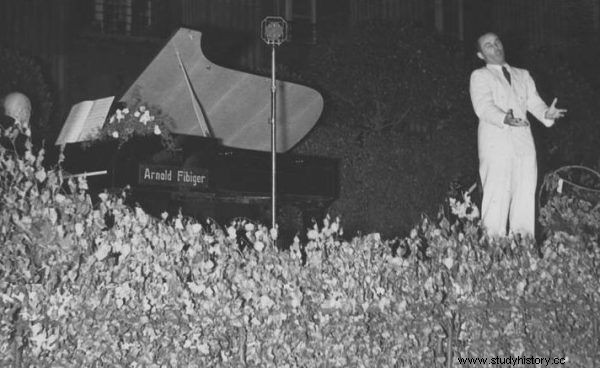
It is possible that Jan Kiepura inherited his great musical talent from his mother (source:public domain).
Lejbowicz, who heard the improvised home songs of young Kiepura, who once told him: If I love God, Mr. Jan has a great talent . And he told him about the Warsaw Opera and famous professors to whom "Mr. Jan" must necessarily go, because you have to work to make Jan great .
Kiepura took to heart the advice of the Jewish violinist more than the fears of his parents, who did not believe in the singer's career that awaited him.
Kiepura's origins made the artist (then performing in the USA) on the infamous Nazi list:"Lexikon der Juden in der Musik" during World War II. Before Hitler set fire to Europe, there was a tragicomic situation in Berlin involving Kiepura.
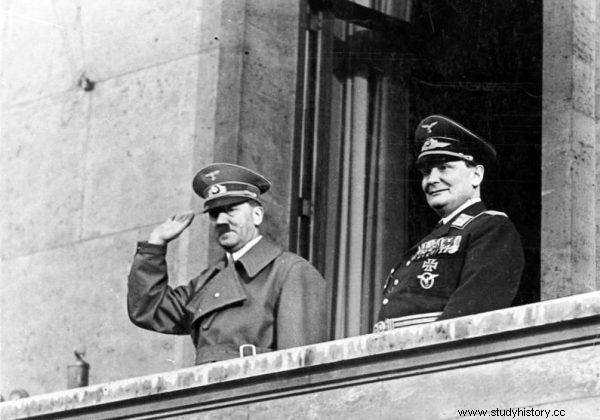
Kiepura was known for his audacity. Marshal Herman Göring (source:Bundesarchiv; lic. CC-BY-SA 3.0) also found out about it.
Under anti-Semitic laws, the Reich seized German bank accounts belonging to people of non-Aryan origin - and Kiepura and his wife were on this list. The indignant artist arranged a sort of audience with Göring himself and on this occasion completely scolded the German marshal. He probably just didn't realize who he was dealing with. Göring reportedly was so amused by the tenor's cheek that he ordered the accounts to be unblocked.
2. Stanisław Lem. The greatest Jewish science fiction writer?
Immediately after the Soviet occupation of Lviv, Stanisław Lem - who has just graduated from school - found out that he cannot study at the polytechnic due to class reasons. For the Soviets, he was a representative of the bourgeoisie (his father was a famous ENT specialist, and the family owned two tenement houses). Then the Germans appeared in place of the Soviets. Actually, it is only the Nazi legislation that makes me aware that Jewish blood flows in my veins - recalled Lem.
He did not come to the ghetto thanks to false papers, and for a large part of the occupation he worked as a welder and mechanic in the car workshops of a German company dealing in the recovery of raw materials. For a short time he hid a Jew he knew in the garage. He also managed to get his parents out of the Nazi transit camp in Piasek in Lviv.
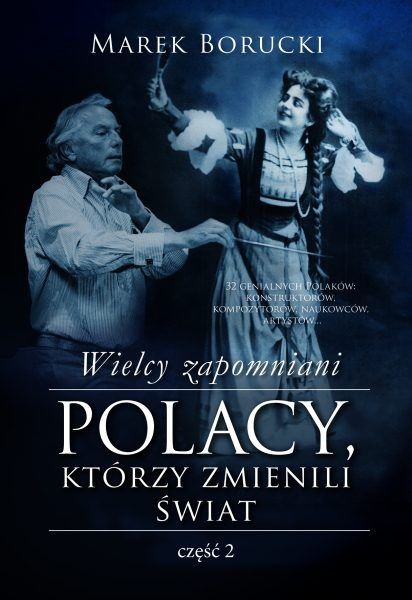
After many years, he told Władysław Bartoszewski the story of saving his father, Dr. Samuel Lehm - not during World War II, but during World War I. Doctor Lehm, taken into Russian captivity, was led by the Bolsheviks to be shot. However, he found an escort who also turned out to be ... a Jew from Lviv.
This is how the laryngologist of the Bolsheviks got away - and Stanisław Lem a few decades later could joke that if it were not for this incident, he would never have come into the world. As a result, neither "Solaris", nor "The Tales of Pilt Pirx", or even "Fairy Tales of Robots" would be created.
3. Stanisław Ulam. A Polish Jew constructs a thermonuclear bomb
The career of a mathematician, started at the famous table in the Szkocka cafe in Lviv, led Stanisław Ulam to the other side of the ocean.
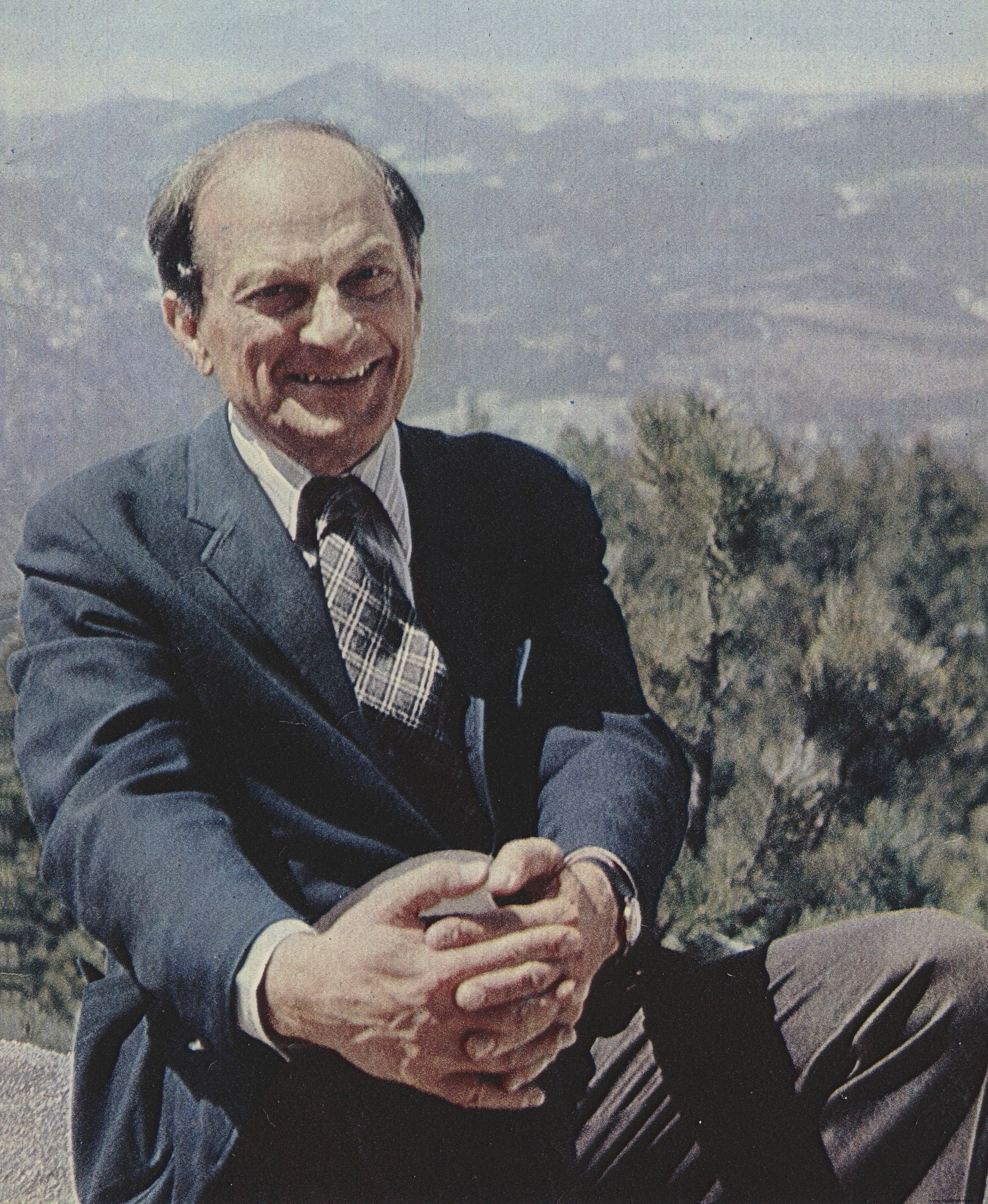
Stanisław Ulam, father of the thermonuclear bomb (photo:Olgierd Budrewicz). A photo from Marek Borucki's book titled "Great Forgotten. Poles who changed the world ”, part 2 (Muza Publishing House 2016).
In interwar Poland, he had no chance of a career worthy of an opportunity. Although the Ulam family had been assimilated for a long time (they probably came to Lviv from Venice), when the future scientist submitted his papers to the polytechnic, it turned out that due to the limited admissions of Jews, there was no place for him at the faculty.
Years later, as one of the most important representatives of the Lviv school of mathematics, he realized that he was constantly hitting the ceiling. Professor positions were difficult to access, especially for people of Jewish ancestry like me - he recalled. At universities, the anti-Semitic climate was felt more and more. In 1934, Dr. Ulam went out into the world - first he went to Princeton and then to Los Alamos.
This article has more than one page. Please select another one below to continue reading.Attention! You are not on the first page of the article. If you want to read from the beginning click here.
He took a significant part in the creation of the thermonuclear bomb. Here, however, one hundred percent of the merits were wrongly attributed to Edward Teller, who - as Marek Borucki emphasizes in the book "Wielcy Forgotten. Poles who changed the world "- talking in numerous interviews about his work on the hydrogen bomb […] never mentioned Ulam's name.
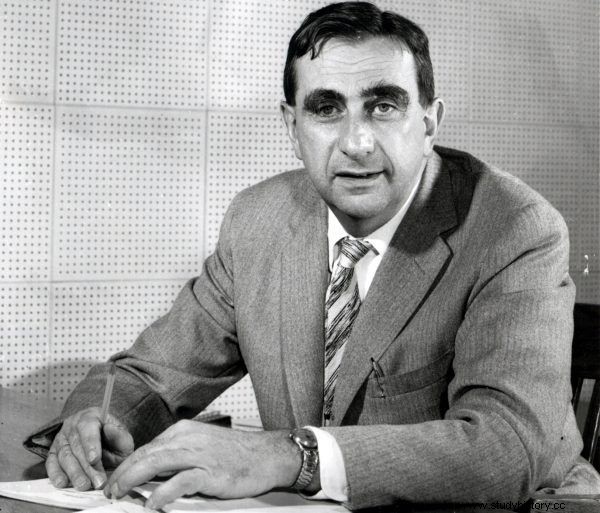
Until the end of his life, Edward Teller did not want to admit that it was actually Stanisław Ulam's calculations that allowed him to construct a thermonuclear bomb (source:public domain).
Nobel laureate Hans Bethe aptly concluded the whole matter by saying that Ulam is the father of the hydrogen bomb, and Teller the mother, because he carried the child for quite a long time .
After the war, Ulam decided to stay in the USA because he thought there was no one to go back to and nothing to do with it. His wife remembered him as a man "full of contrasts" who showed the face of both a proud Pole and an agnostic Jew, sensitive to his ethnic affiliation .
4. Henryk Wieniawski. Grandson of a Jewish barber
The composer Henryk Wieniawski is still said to be "the second incarnation of Paganini". An international violin competition with great traditions was named after him, and the achievements of the 19th-century violinist are equal to Chopin himself.
 But what were the beginnings of his career? Wieniawski's grandfather, Herszek Mejer Helman, was a barber from Wieniawa near Lublin. My father - meritorious and decorated in the November Uprising, where as a staff doctor he organized a hospital for soldiers and officers - considered himself a Pole and that is why he changed his name to Wieniawski.
But what were the beginnings of his career? Wieniawski's grandfather, Herszek Mejer Helman, was a barber from Wieniawa near Lublin. My father - meritorious and decorated in the November Uprising, where as a staff doctor he organized a hospital for soldiers and officers - considered himself a Pole and that is why he changed his name to Wieniawski.
The mother, in turn, was the daughter of a Jewish doctor from Warsaw, Józef Wolff, and her brother was the composer Edward Wolff, appreciated abroad. It was my mother who was Henryk Wieniawski's first teacher, but also went with him on an extremely important journey from his native Lublin to France.
She convinced the management of the Paris Conservatory that her 8-year-old son - who had already made his soloist debut - should be admitted to this university as an exception. And so Henryk Wieniawski became the youngest graduate of the Conservatory in its history - he won the exam competition at the age of 11, while as a rule, only 12-year-olds were admitted to the university. It was the first step in a stunning music career.
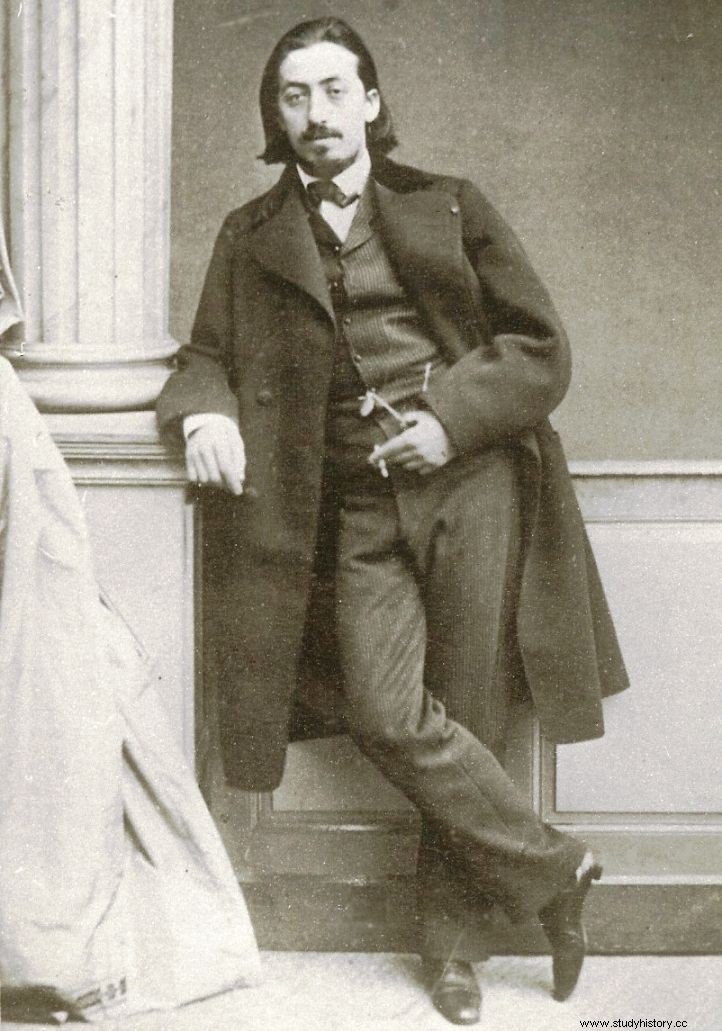
Henryk Wieniawski is said to be "the second incarnation of Paganini" (source:public domain).
5. Gustaw Herling-Grudziński. Polish-Jewish witness of Stalin's murders
The writer, known primarily as the author of "Another World", a moving image of life in Soviet labor camps, spent most of his post-war life in Naples. However, when he came to Lublin after more than half a century, he ordered to go to Majdanek. He probably knew that the Nazis brought Jews from his neighborhood here.
In the birth certificate of Gustaw Herling-Grudziński (1919) it was written: The child was given the name of Gecel vel Gustaw when performing a religious rite . The secondary school-leaving certificate included the following information: Herling vel Grudziński, Jewish religion . He was probably baptized during his studies.
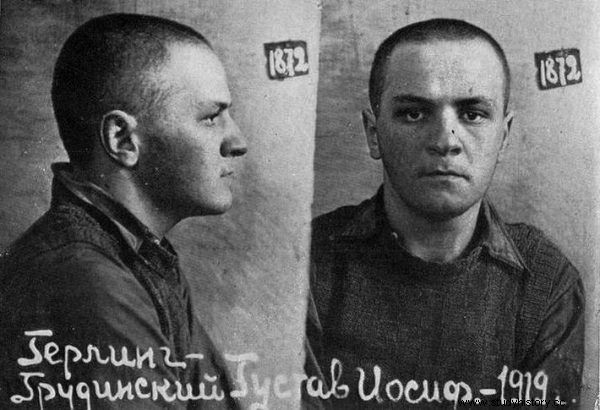
Gustaw Herling-Grudziński in a photo taken by the NKVD in 1940 (source:public domain).
The parents were Jews - and were Polonized. It was so important for the writer that when in the late 1990s he found in his scientific biography a mention: was born in a Jewish family he took it reluctantly. According to him, the author should have written: in a Polish family of Jewish origin .
As a rule, he remained silent about his roots - until the end of his life, which amazed the researchers of his works:Ewa Bieńkowska and Zdzisław Kudelski.
This article has more than one page. Please select another one below to continue reading.Attention! You are not on the first page of the article. If you want to read from the beginning click here.
6. Jan Brzechwa. The Jewish father of Mr. Kleks
The pseudonym "Brzechwa" was invented by 18-year-old Jan Lesman's cousin Bolesław Leśmian. Brzechwa's literary career was still marked by a lack of satisfaction:he wrote outstanding works for children, but he treated them skeptically (apparently he took on such works, because he wanted to seduce a kindergarten teacher on vacation). He was also treated in advance by the pre-war literary milieu.
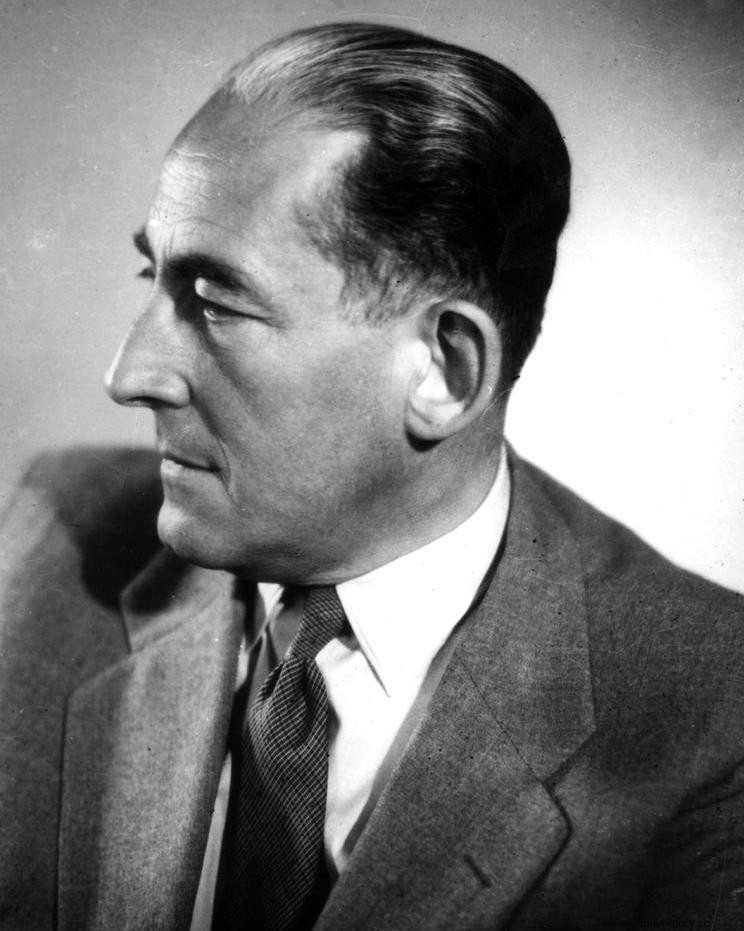
Pre-war nationalists mentioned Brzechwa's fascination with Piłsudski, because for them there was something “disturbingly false” in this "Jewish cult" of the Marshal (source:public domain).
Grandfather Brzechwa was still teaching at a Jewish school, but the family gradually departed from religion and tradition. Nevertheless, the poet was never ashamed of his origin. On the other hand:when he was taking his history during his high school exam and he was praised for his knowledge of the "home" Romanov dynasty, he blurted out: I'm a Pole .
During the Polish-Bolshevik war, he left his studies to fight for the independence of his homeland. Ironically:later the nationalists reproached him for his fascination with Piłsudski, because for them in this "Jewish cult" of the Marshal there was something "disturbingly false".
 Before Jan Brzechwa started flirting with the red authorities, a large part of the war survived - which is hard to believe - in Warsaw , and with a Kennkarte in the name of Lesman. In the shadow of the war and occupation, i.a. "Mr. Kleks's Academy".
Before Jan Brzechwa started flirting with the red authorities, a large part of the war survived - which is hard to believe - in Warsaw , and with a Kennkarte in the name of Lesman. In the shadow of the war and occupation, i.a. "Mr. Kleks's Academy".
7. Krzysztof Kamil Baczyński. A poet of the war time with a Jewish lineage
Probably no other biography fits to such an extent the opinion of Stanisław Pigoń that Poles are a nation whose fate is to shoot the enemy with diamonds. Baczyński is a symbol of a generation, but Jewish accents in his biography are mentioned, for some reason, rarely.
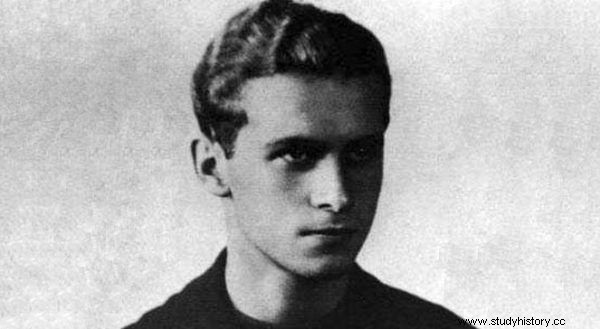
Photo of Krzysztof Kamil Baczyński from the secondary school leaving certificate (source:public domain).
The poet's mother - teacher Stefania Baczyńska - was admittedly a devout Catholic neophyte, but came from a Polonized Jewish family (such speculations, although less documented, also appeared in relation to Father Baczyński).
Adam Zieleczyk - Stefania's brother, that is Krzysztof Kamil's uncle - during the war ended up in the ghetto, from which he later escaped and hid in Warsaw on Aryan papers. He died when in the summer of 1943 the Germans (after denunciation) arrested him and his whole family.
To what extent did such events in the family and, more broadly, the suffering of Warsaw Jews affect Baczyński? Miłosz drew attention to the tearing of the young poet, writing about the impossible to solve problem of solidarity . According to him, Baczyński felt that his people, with whom he is connected not only by blood, but also by the history of several millennia, were Jewish people in the ghetto. Some poems show this clearly .
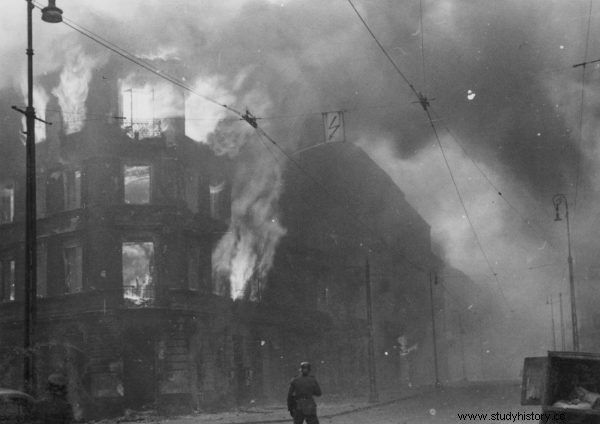
When reading the poignant "Generation", it is worth remembering that Baczyński wrote it when the Warsaw ghetto was on fire. The photo shows tenement houses set on fire by the Germans at the intersection of Zamenhofa and Wołyńska streets (source:public domain).
Following this path, it is worth re-reading a few well-known works by Baczyński. For example, the well-known from school "Generation" or an untitled work that was written in the spring of 1943 - when the Warsaw ghetto was burning: You were like a big old tree, / my people like an impudent oak (...) They tear and cut your leaves, / that you stand naked and bend your head. (…) My people! To arms! .
Many readers instinctively assumed that this work was about the suffering of Poles rather than Jews - as if one had to exclude the other. Not only for the creators and scientists mentioned here, Polishness and Jewishness constituted equally important components of their identity. And more than one could subscribe to the words of Tuwim: But most of all - a Pole because I like it so much .
Bibliography:
- Władysław Bartoszewski, Secrets of Lem [talking to Paweł Goźliński, Jarosław Kurski] [in:] Wybcza.pl. [accessed on 2016.05.01]
- Ewa Bieńkowska, Writer and fate. On the work of Gustaw Herlin-Grudziński , Foundation of Literary Papers 2002.
- Marek Borucki, Great Forgotten People. Poles who changed the world , part 2, Muza SA 2016.
- Kudelski Zdzisław, Gustaw Herling-Grudziński. Jewish thread [in:] "Rzecz o Książkach" (supplement to "Rzeczpospolita"), May 2003, May 6.
- Stanisław Lem, The World on the Edge [in conversation with Tomasz Fiałkowski], Wydawnictwo Literackie 2000.
- Stanisław Lem, That's what Lem says [in conversation with Stanisław Bereś], Wydawnictwo Literackie 2002.
- Józef Lewandowski, Around the biography of Krzysztof Kamil Baczyński [in:] Painful glass, an image of the days…:essays not expired , Ex libris 1991.
- Wacław Panek, Jan Kiepura. Life like from a fairy tale , publishing house Kurpisz 2002.
- Mariusz Urbanek, Brzechwa not for children , Iskry Publishing House 2013.
- Mariusz Urbanek, Brilliant. Lviv School of Mathematics , Iskry Publishing House 2014.
Check where to buy "Great Forgotten Ones." Poles who changed the world ":
